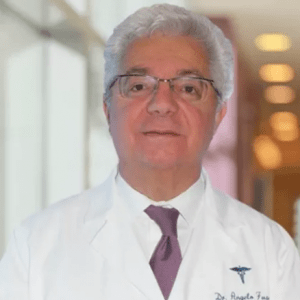Canthoplasty
The term canthoplasty originates from the Greek word “kanthos”, which means the corner of the eyes, and plasty means to form [1]. Canthoplasty is a reconstructive surgical procedure used to correct sagging and uneven eyelids by tightening the muscles that support the outer corners of the eyelid. In other words, canthoplasty is a procedure that involves the improvement of the corners of the eyes. Read More
Top Doctors For Canthoplasty Treatments
Top Hospitals For Canthoplasty Treatments
Canthoplasty
What is Canthoplasty?
The term canthoplasty originates from the Greek word “kanthos”, which means the corner of the eyes, and plasty means to form [1]. Canthoplasty is a reconstructive surgical procedure used to correct sagging and uneven eyelids by tightening the muscles that support the outer corners of the eyelid. In other words, canthoplasty is a procedure that involves the improvement of the corners of the eyes.Types of Canthoplasty
There are two main types of canthoplasty surgery:- Lateral canthoplasty.
- Epicanthoplasty/ medial canthoplasty
- Lateral canthoplasty.
- Medial canthoplasty
- Double Canthoplasty
Reasons for Canthoplasty
This surgical procedure can be carried out for either medical or cosmetic purposes. Patients with droopy, saggy, or baggy lower eyelids are likely candidates for a canthoplasty. Other reasons for canthoplasty may include:- Creating an almond/cat-eye shape.
- To reduce the effect of droopy eyes.
- To correct a lower lid laxity caused by either trauma or previously performed eyelid surgery.
Surgery Procedure
- Before surgery,
- Stay away from certain medications like nonsteroidal anti-inflammatory drugs, which can thin the blood and slow down the healing process.
- Stop smoking and alcohol 2 to 3 weeks before the surgery to aid healing.
- Come with a personal aide, a family or a friend to assist you after surgery.
- In surgery,
- After surgery,
Recovery
According to the type of surgery, you may return home on the same day or may have to stay for some days for your progress to be monitored. Your recovery rate will depend on the type of canthoplasty you had. However, to enable recovery, you have to follow some guidelines.- Pains come naturally after surgery. Sometimes, swelling and bruising may occur. Wrap a cold pack in a towel and place it on the area to keep these under control.
- Always prop your head up with a pillow to avoid swelling of the eyes.
- Lay with your eyes facing upwards till you are healed up.
- Do not strain your eyes while you heal up. Avoid bright lights, wear sunglasses, and keep your eyes shaded, as they will be sensitive during the healing process.
- Quit any medication that will slow down the healing process. Seek medical advice before taking any drugs.
- Quit smoking and alcohol for 2 to 3 weeks after surgery to enable the incision to heal faster.
- Desist from any strenuous activity.
- Ensure you clean the incision area and replace the bandage every day to avoid infections.
- Be careful while taking your bath. Avoid getting water into your eyes and the incision area until you heal. Instead, wipe with clean, dampened towels.
- Visit your surgeon regularly for checkups.
Possible Complications
Canthoplasty surgeries have high success rates as many people undergo these procedures every year. Still, even with the success rates, there can be complications. Some complications include:- Scarring where incision may refuse to heal
- Pain that may refuse to wear off even after taking painkillers.
- Eye infection; redness, swelling, excretion of fluids, etc.
- Wound rupture.
- Deformity of the external commissure
- Mucosal exposure.
FAQ
- How long can you see the results of canthoplasty surgery?
You will see evident results within 3 weeks to 1 month.
- How long does it take to recover after canthoplasty?
Recovering is usually time taking. However, recovery can take 3 to 4 weeks. Your eyes need to always be at rest and avoid strain. Also, the type of canthoplasty determines how quick your recovery can be.
- What is the success rate of canthoplasty?
The average canthoplasty surgery success rate is between 80 to 90%.
- How long will it take to return to work after the procedure?
Strain to the eyes after surgery is risky. So, it is advised that you rest your eyes till you no longer feel regular pains from the surgery.
2 to 4 weeks is an estimated time to get back to work.
- Who is eligible for canthoplasty?
Criteria for getting a canthoplasty are often based on the eye condition or defect that warrants the surgery.
Still, it is advised that you are mentally capable of handling the surgery and that you have no medical history that would stage a risk for the surgery like diabetics, leukemia, etc.
References
- https://assileye.com/conditions/canthoplasty-sagging-eye-correction



















































































